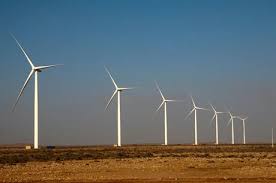The Ras Ghareb, Egypt’s largest wind farm equipped with 125 2.1 MW wind turbines, has been completed 45 days ahead of schedule in Egypt. The Ras Ghareb company was created in 2017 to operate the recently inaugurated wind farm in the town of Ras Ghareb in the Gulf of Suez in Egypt. The management of the facility will be by a company that is 40% owned by Engie, 40% by Toyota Tsusho Corporation/Eurus Energy Holdings Corporation and 20% by Orascom Construction. The EPC (engineering, procurement and construction) for this wind farm was accomplished by Siemens Gamesa, a Spanish company that has previously installed turbines that are capable of supplying 262.5MW. The project was carried out on a build-own-operate basis under a 20-year Power Purchase Agreement (PPA) with the Egyptian Energy Transmission Company, marking the first renewable energy project of its kind and magnitude in Egypt for an Independent Power Producer.
Financing the Project
Ras Ghareb, Egypt’s largest wind farm required an investment of $380 million, financed by the Japanese Bank for International Cooperation (JBIC), in coordination with Sumitomo Mitsui Banking Corporation and Société Générale, under the cover of Japanese export and investment insurance (Nexi). Additionally, the Commercial International Bank (CIB) Egypt is the bank that provided credit facilities for working capital purposes and Attijariwafa Bank provided an equity bridge loan to Orascom Construction.
The electricity made by the wind farm will be sold to the Egyptian Electricity Transmission Company (EETC) under a 20-year power purchase agreement.
Also, read Egypt signs agreement with Swiss company to construct incineration plants
Benefits to the community.
The Ras Ghareb wind farm has been a major cause for economic growth and job creation in the area during the construction of the wind farm, as most of the suppliers were local. It specifically employed a total of more than 50 subcontractors across the area, creating approximately 140 jobs. It also helped boost local businesses that supplied the project such as El-Masria Equipment, that supplied the cranes, SIAG, DSD Ferrometalco, and NSF, that manufactured all the towers locally, along with support from Power Zone and Petrotec.
The construction of the wind farm is part of the Egyptian government’s plan to increase dependency on renewable energy sources so that the ratio of power generation from renewable sources reaches 20% of Egypt’s electricity production by 2022, and 42% by 2035 as it offers huge growth potential in wind power, especially in the Gulf of Suez and the Nile Valley. It is one of the 15 countries worldwide presenting the greatest potential for growth, as it is expected to install 6,500 MW of wind power capacity by 2026.

Leave a Reply